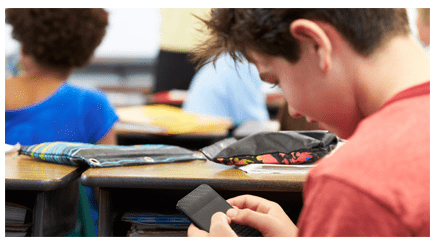
Instructor’s Corner: Common Ways College Students Misbehave in Class
A new study by Zac D. Johnson of CSU Fullerton, Christopher J. Claus of CSU Stanislaus, Zachary W. Goldman of Illinois College, and Michael Sollitto of Texas A&M explores the ways in which today’s students misbehave in class, and argues that mindfulness of such misbehavior could provide instructors with the ability to enhance student success.
Johnson and his colleagues define student misbehaviors as actions that “disrupt learning.” In study after study, these misbehaviors have been shown to be detrimental to learning at every grade level and in many contexts. This study aimed to identify which student misbehaviors were most frequently observed in today’s college classroom.
The researchers surveyed 188 college instructors hailing from a variety of educational backgrounds and institutions. The instructors received a definition of student misbehavior and then were asked to provide brief descriptions of as many student misbehaviors as possible, based on their classroom observations.
From the survey responses, the authors identified 12 student misbehaviors, which they divided into two categories: actions and interactions. They defined actions as individual acts performed by students. While these actions might be witnessed by and affect other parties (such as other students or instructors), these parties do not need to be directly involved for the action to be recognized as misbehavior. Interactions, on the other hand, were defined as student misbehaviors that require another individual as the interlocutor, receiver, or target (for example, talking loudly to other students during a lecture). The 12 distinct student misbehaviors can manifest themselves in several ways. These displays are what the authors refer to as “behavioral indicators.”
The following is a list of the 12 misbehaviors that Johnson and his colleagues identified, as well as some of the ways students might exhibit these actions and interactions in class.
Actions
- Failure to engage. Students may not participate in a discussion, group activity, or other assignment. Or, in the middle of class, they may engage in an unrelated task such as reading a newspaper, studying for other classes, or playing online games.
- Attendance issues. Students may misbehave by missing class, leaving class early, packing up before class is over, showing up late, or engaging in excessive leaving and returning behavior.
- Violations of normative classroom behavior. Students may sleep or eat in class.
- Lack of attention. Students may not follow directions, or may display inattention in class.
- Technology use. Students may text in class or use their computer, phone, or other mobile device for long periods of time.
- Failure to prepare. Students may not complete tasks, assignments, or homework. They may turn in late work, not read assignment materials, or not bring a book or another necessary material to class.
- Academic dishonesty. Students may cheat or plagiarize.
Interactions
- Disrespect. Students may laugh at or make fun of others in class, ignore or disregard others, threaten other people, put down others’ comments, or verbally or physically attack other people in class.
- Excessive sociability. Students may hold side conversations in class, chat with peers about non class-related material, whisper during a lecture, or have personal conversations in class.
- Problematic participation. Students may interrupt peers or the instructor, speak out of turn, dominate class discussion, ask repeated questions, or bring up ideas that are unrelated to the course.
- Contention. Students may complain about the course workload, rigor, assignments, practices, instructor, peers, or other educational-related issues (for example, university or departmental policies). They may argue with the instructor or peers and challenge the professor’s expertise, the worth of the material, or the observations of others.
- Externalization. Students may make excuses and practice blame shifting (for example, contending that an incomplete assignment or poor performance in class is outside of their control.
Practical Implications
The action-interaction classification structure may help instructors understand how student misbehaviors occur. Understanding these behaviors can then help instructors to enhance student success, especially as the college landscape continues to change with ever-present technology, helicopter parents, and the consumer mentality of education, says Johnson. Further, and most importantly, explain the authors, a deeper understanding of student misbehaviors can help instructors identify at-risk students early on. For example, a student who does not engage in class may “fail to make cognitive gains or affective connections to his/her coursework,” which could ultimately be a problem in a variety of classes. Students who engage in interaction misbehaviors might act out to receive attention “because they are failing to build meaningful relationships with either peers or instructors.” Instead of pandering to misbehaving students, Johnson and his colleagues suggest that instructors take the time to identify those students who routinely engage in misbehaviors and attempt to build relationships with them. This could give those students reason to engage in the classroom via meaningful involvement.

